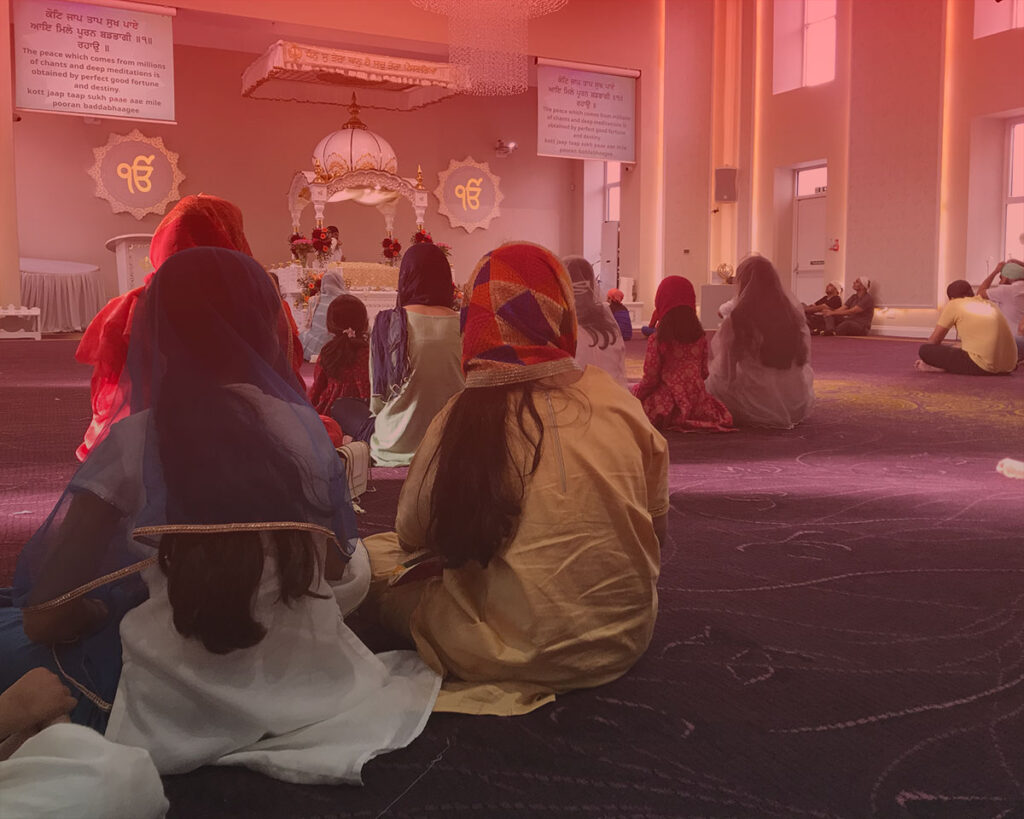Nestled in a quiet cul-de-sac in Notting Hill sits the Central Gurdwara. In the basement lies a massive hall, where strips of burgundy carpet are laid out on the beige tiled floor. All day, every day, people with their heads covered in cloth walk in and out of the gurdwara, which is crowned with a golden dome. They pick up a steel plate from a rack, stand in queue and wait to be served from a buffet of assorted North Indian or Punjabi food.
Founded in 1908, the Central Gurdwara (Khalsa Jatha) is the oldest Sikh temple in Europe. One of the tenets of Sikhism is “seva” or “to serve”, which includes volunteering to cook and serve food in a community kitchen – typically known as “langar” – to anyone who walks in looking to eat. All free of charge.
“All Sikhs make regular voluntary contributions to keep it running. Even the poorest Sikh will make his contribution. Contributions can be made in cash or kind or in the form of rendering help in the preparation of food, serving food, cleaning utensils, cleaning the floors and removing trash,” writes Jagraj Singh in his book A Complete Guide to Sikhism.
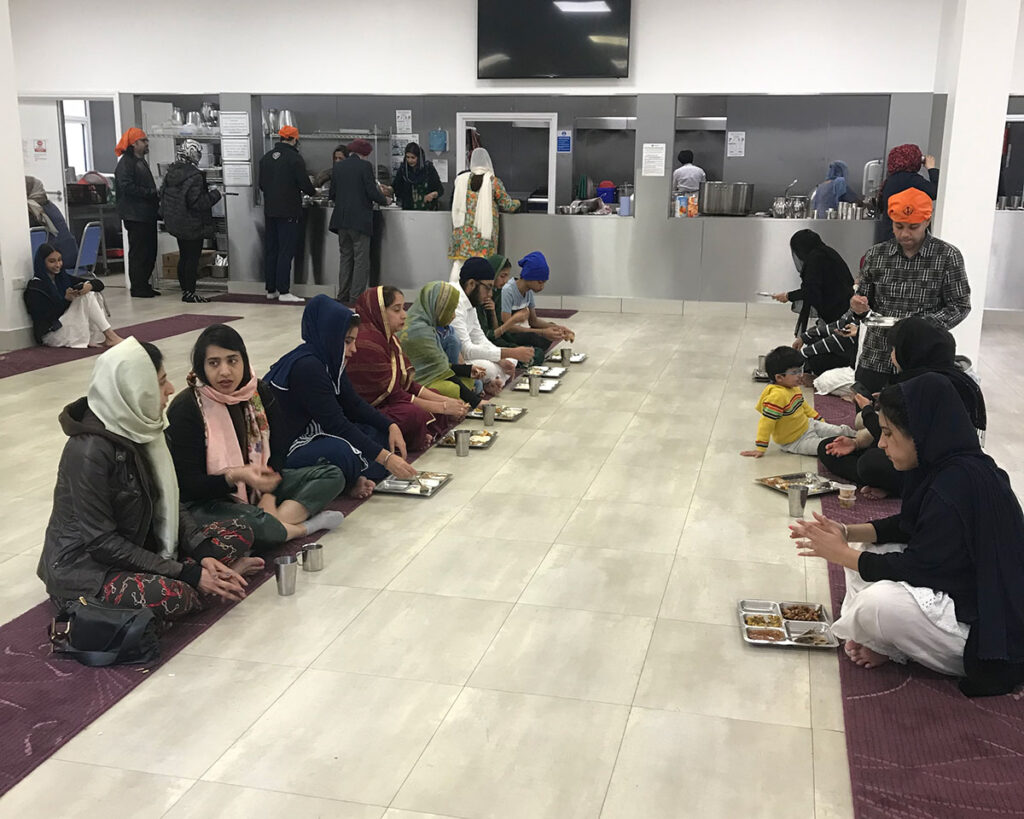
Twice a week, 62-year-old Hardeep Ghai travels to the gurdwara from Maida Vale. At 5.30PM on a Sunday in May, she is peeling garlic for the following day. She has already cooked rice, aloo sabzi and daal for at least 150 people; nearly half of which is gone.
“Guru Nanak (the founder of Sikhism) said we should work hard and divide everything we have. This is how I’m volunteering today. Everyone is free to volunteer in the way they want,” says Ghai, a Montessori teacher.
Ghai got married in 1984 in New Delhi, India. She moved to London the following year and has been volunteering at the gurdwara since. Now that her kids are grown up, she makes more visits to the gurdwara. “We do seva, we chat, we eat langar; it’s better than sitting at home,” she says.
For many, visiting the gurdwara regularly is not just a way of worshipping and volunteering, but also helps in being part of the larger Sikh/Punjabi community; staying culturally rooted in a foreign land.
Ghai’s daughter, Taranjeet, took free lessons in the Punjabi language at the gurdwara, as well as learnt to sing kirtans (devotional songs) and play the harmonium. She frequently visits the gurdwara and, like her mother, is involved in voluntary work. (The word “gurdwara” is a combination of two words: gur from the Sanskrit “guru”, meaning God, and dwara from the Sanskrit “dwar”, meaning door).
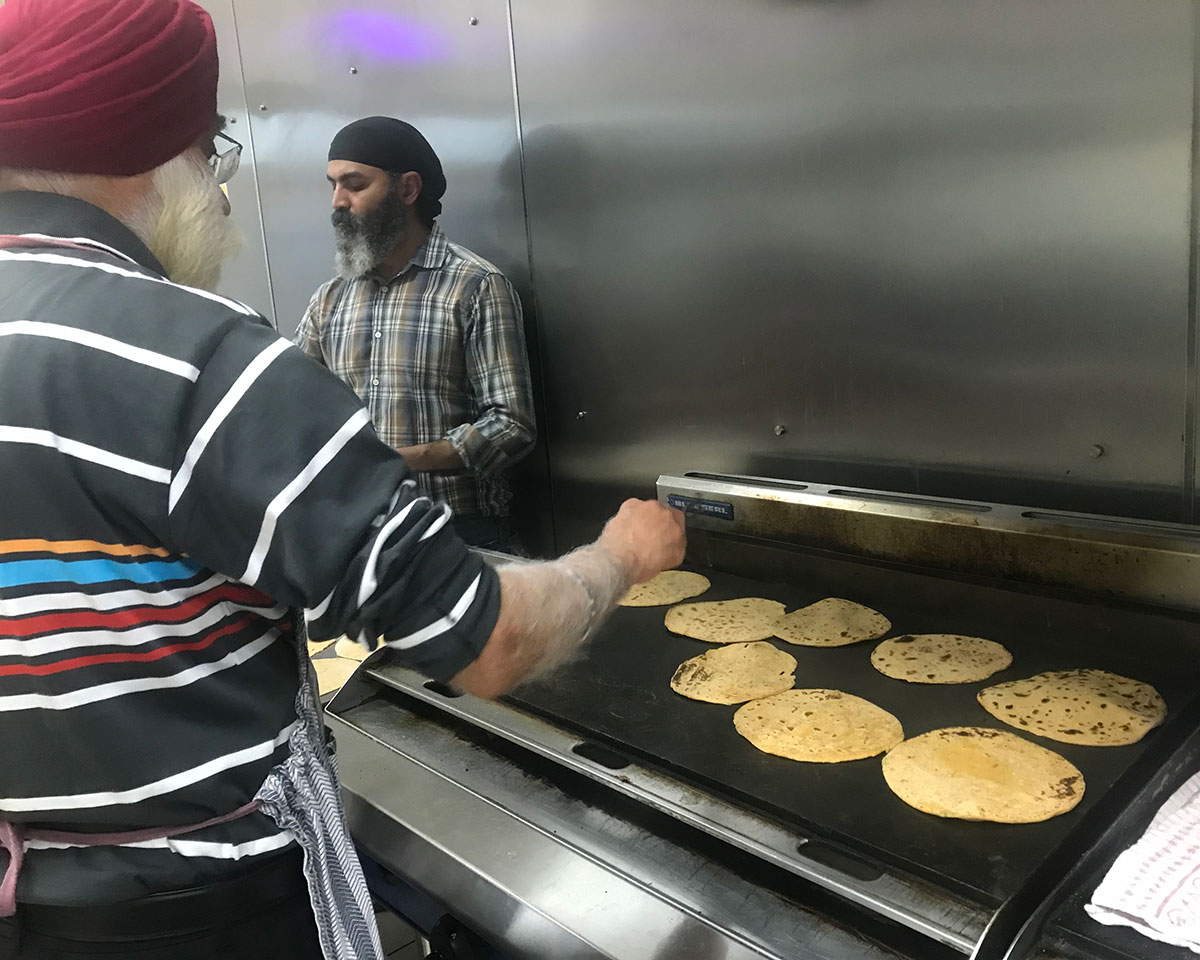
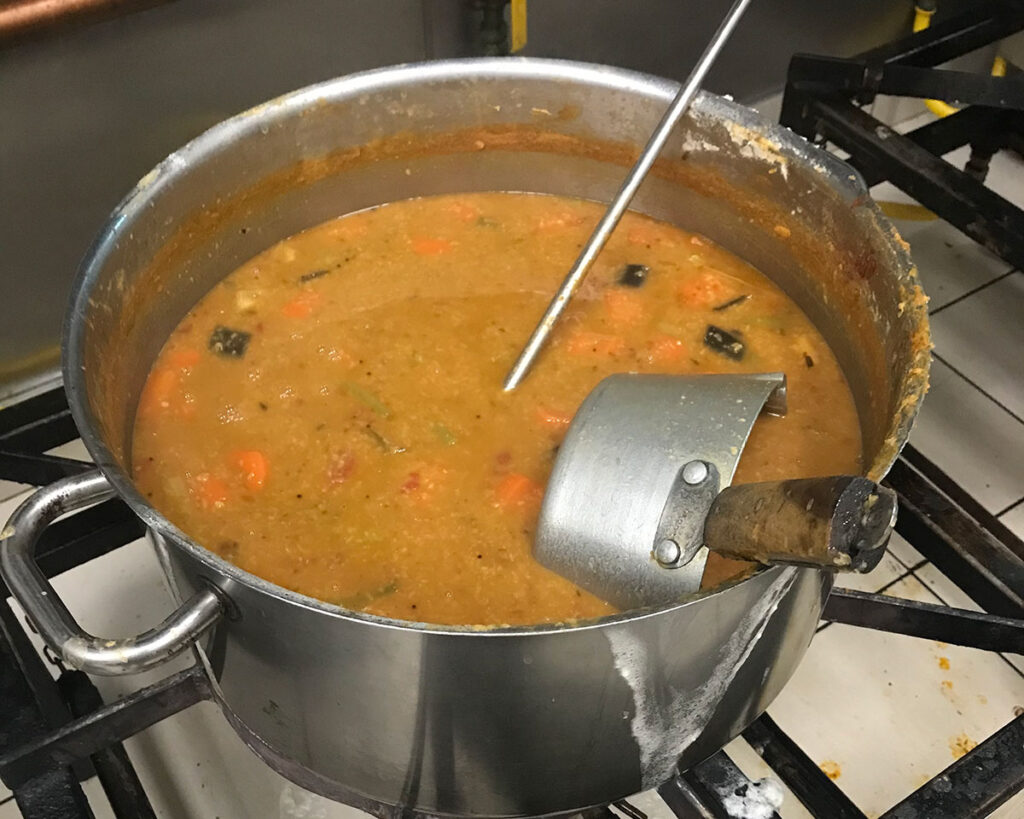
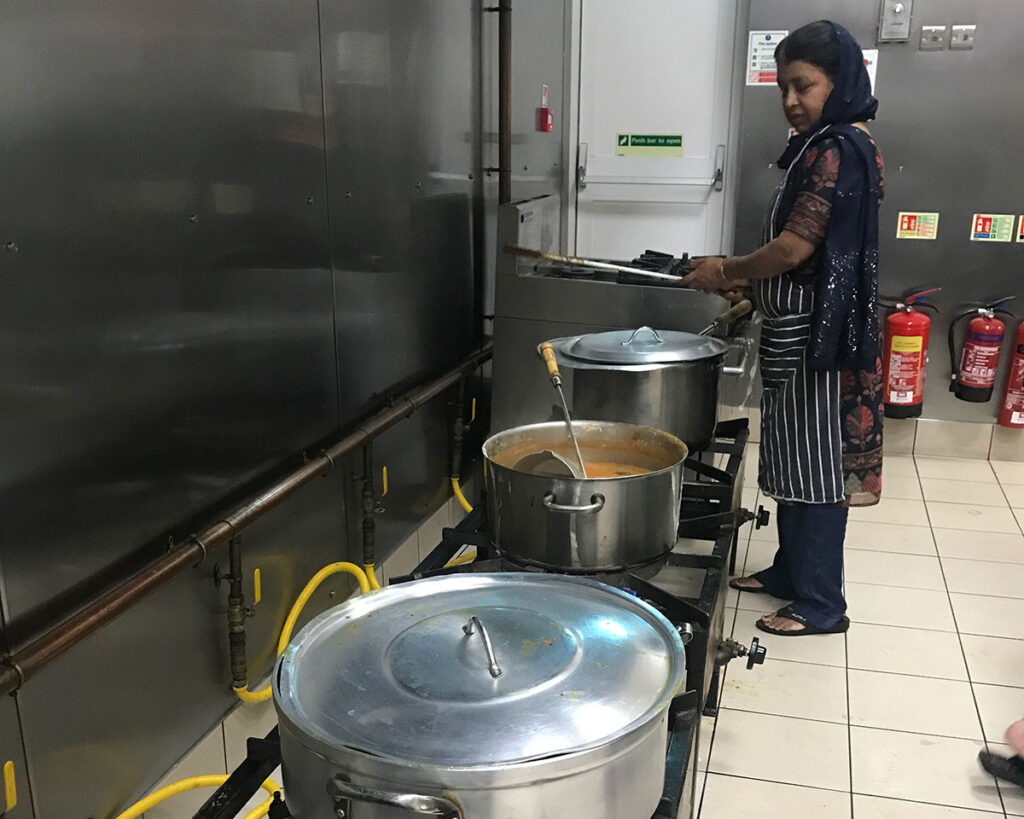
Dalbir Rehncy, 60, is at the gurdwara several times a week. She takes the Central Line train from Stratford, where she lives, straight to Shepherd’s Bush – the closest station to the gurdwara. Rehncy has been visiting and volunteering here for three years, before which she used to help out at another gurdwara in Ilford.
“Life is very short. Now I feel like doing good work while I’m alive. We can never be satisfied in life, doing this work makes me feel good,” she tells me as she peels potatoes. “How much will you shop and travel? I’ve travelled the world. I still like holidays but this work makes me feel good.”
Many young Sikh parents, as well as interfaith and interracial couples, bring their children to the gurdwara to experience their religion and culture – especially the food.
Sundays are when the biggest feast of the week takes place, with an assortment of kali daal (black lentil), roti, gobi-aloo (cauliflower-potato sabzi), rajma chaval (kidney beans curry and rice), apple-coriander chutney, salad, pickle and kheer (rice pudding). On Wednesdays, the feast is slightly smaller with, for instance, chole masale (chick peas curry), aloo-beans (potato-beans), roti, rice, yellow daal, and pickle. On all other days, rice, dal, and roti are served. If you pop in for breakfast, you’ll also be served fresh, steamy parathas. Karha prasad, available at all times, is a warm and silky-sweet wheat pudding prepared by the devotional singers, rather than the volunteers in the kitchen. It is considered sacred and is first offered to Guru Nanak before being shared.
Langar is served all day at this gurdwara, from 5.30 in the morning until 8.30-9 in the evening. Gurdwaras all over the world serve food to anybody, irrespective of religion, gender, ethnicity, class and caste, so long as their heads are covered and they are not intoxicated. At the Central Gurdwara, 150 people on average walk in every day. On Sundays, there are many more. If someone apart from the gurdwara committee – a worshipper, say – decides to hold a service, then the number can exceed 300, with guests of the person holding the service plus daily walk-ins.
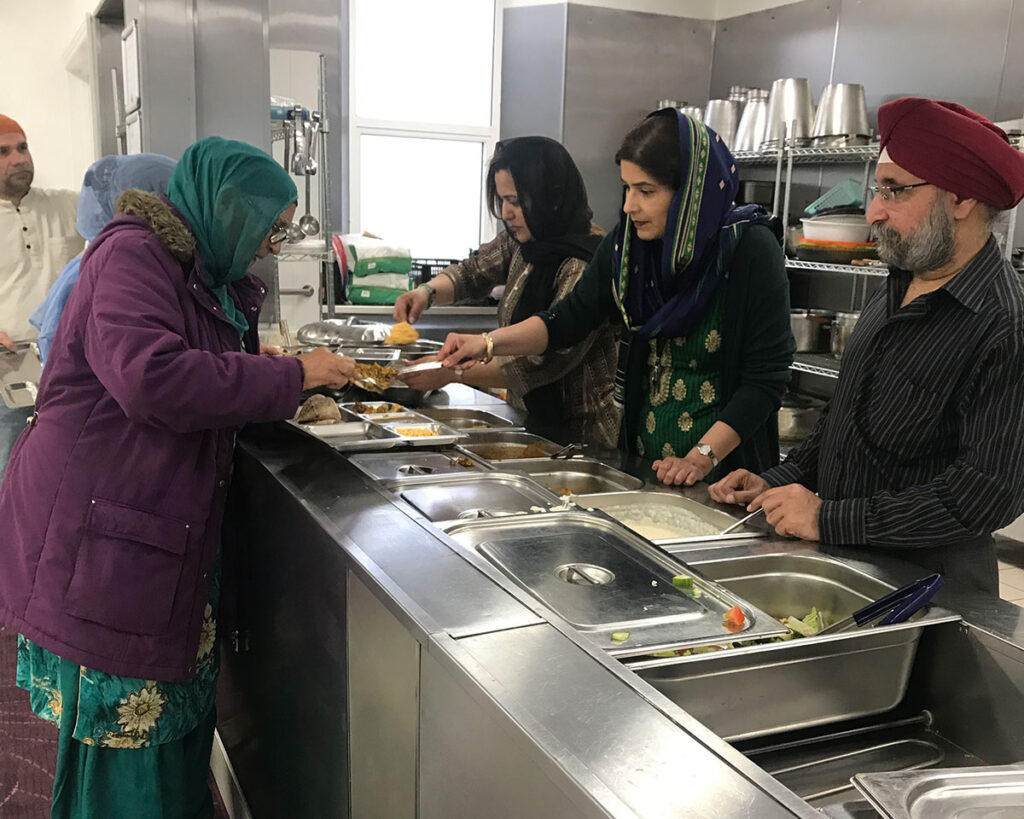
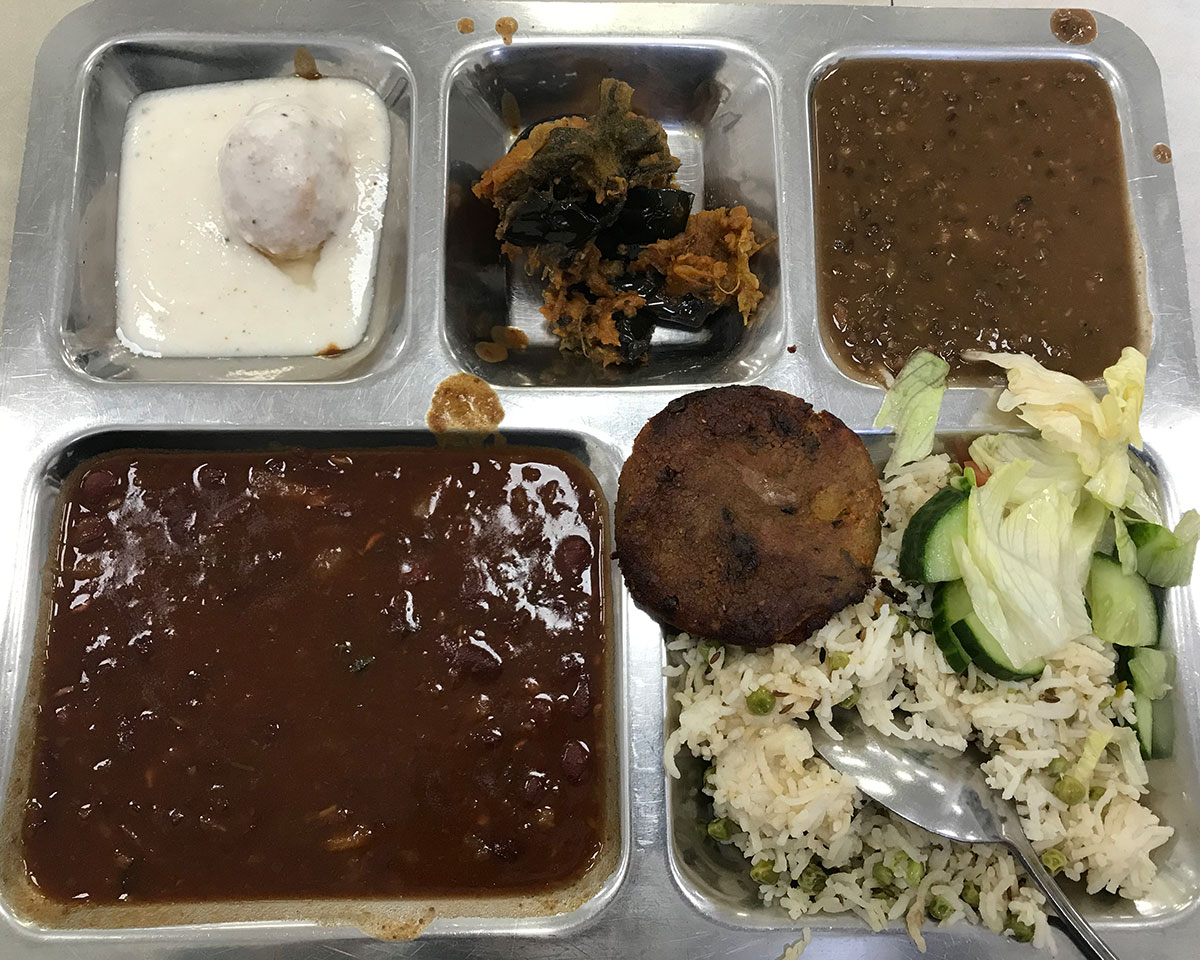
The Central Gurdwara hasn’t always been this way. It started more than 110 years ago from a small house in Putney in South London. There was no community kitchen; people would cook food – chai and pakora (tea and fritters) – in their homes and bring it to the gurdwara for langar. Later, in the early 1910s, the place of worship moved to a bigger house on Sinclair Road in Shepherd’s Bush. It was only in 1969 that it moved to Queensdale Road in Notting Hill, where the gurdwara, in all its glory, stands today. Soon after, two flats nearby were bought for staff and kirtan singers to live in.
Over the years, the kitchen has been renovated several times, the last time being two years ago. For a long time this was the only gurudwara in London, which is why it sometimes became difficult to manage, says Pami Randhawa, vice-president of the Central Gurdwara.
“All the Sikhs from all over London and outside would come here. The supplies were limited but it had to be managed,” she says. “Now there are so many gurdwaras all over London so the crowd is distributed, which puts less pressure on us.”
In the last decade or so, as the number of food banks surged, Central Gurdwara has been actively donating food on a regular basis. The total number of food banks in the UK doubled to 2,173,158 in 2022 compared with 1,091,282 in 2015, according to data Trussell Trust. In London alone, the number more than doubled in this period.
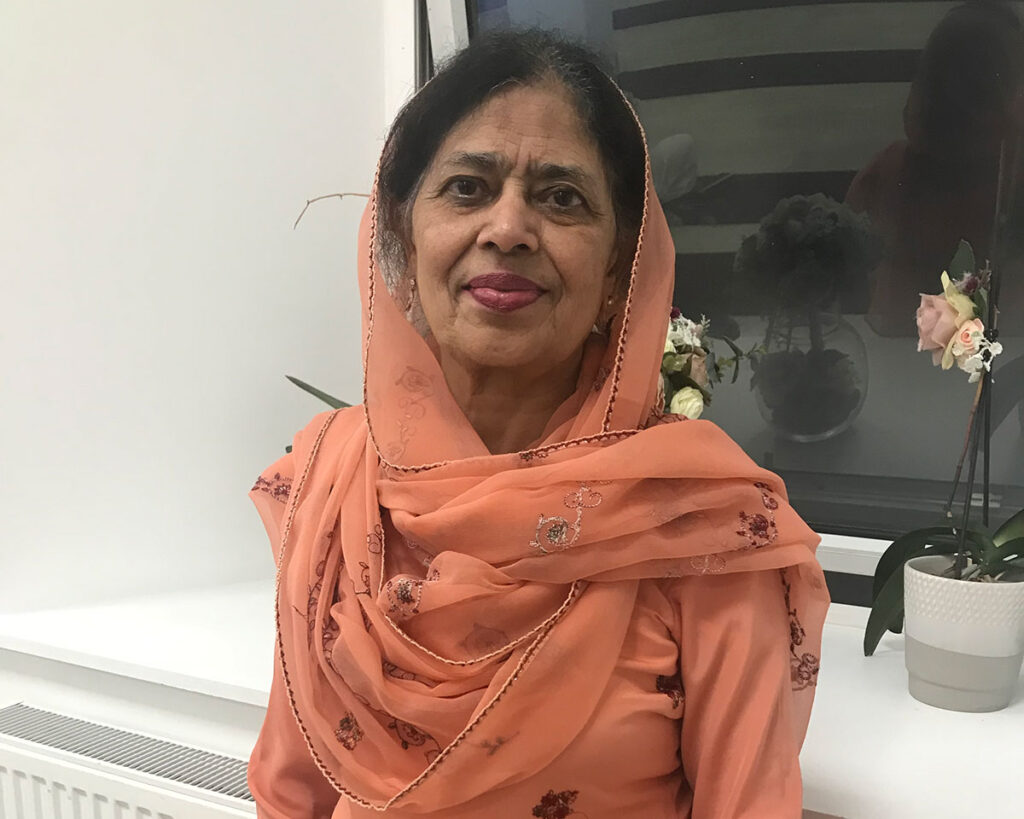
“We donated food to homeless shelters and food banks every day during the Covid pandemic; many more boxes than we are giving out now. Since lockdowns are over, they don’t need so many anymore, so we’ve slowly reduced the quantity,” says Randhawa, who orders provisions and decides the daily menu at the community kitchen. The same food that is served at the langar is packed in boxes, for food bank volunteers in Shepherd’s Bush and the Watford area to come and collect.
Every Sunday, Central Gurdwara donates anywhere between 250 and 300 food boxes. It donates 250 on Saturdays, and between 40 and 100 on Wednesdays and Saturdays, says Randhawa, who has been part of the committee in the gurdwara for more than 40 years. In May, a tweet accompanying a BBC video about a gurdwara providing free food, especially for “rough sleepers”, went viral.
“If anyone is not coping with the cost of living & is struggling to eat, pls search for your local Sikh Gurdwara — we’ll happily give you a hot meal — all are welcome, religion, colour, gender, politics etc are irrelevant to us. Don’t be intimidated, we’re a welcoming bunch,” the tweet read.
As widely-known as langars in gurdwaras are in India, Pakistan and other South Asian countries, many people in London (and other Western cities and countries) are hearing about it for the very first time, despite a substantial Sikh population. But with hundreds of people coming in to eat everyday, and food banks in great need of help, the big question is: how does the Central Gurdwara (and other gurdwaras) handle the costs?
Gurdwaras typically run on donations. People donate whatever they can; most donate money, many donate rations including rice, wheat, oil and vegetables. Some even donate utensils. In May, UK inflation hit a 40-year-high of 9% – one of the reasons being an increase in food prices. In the same month, a report by consumer group Which? noted that prices of more than 256 groceries increased by 20 percent, compared with two years earlier.
However, Randhawa said that Central Gurdwara hasn’t been affected by rising food prices. “God has made many rich people who are not affected by inflation, so they donate. Thanks to Guru Nanak we are alright.”
Read More

